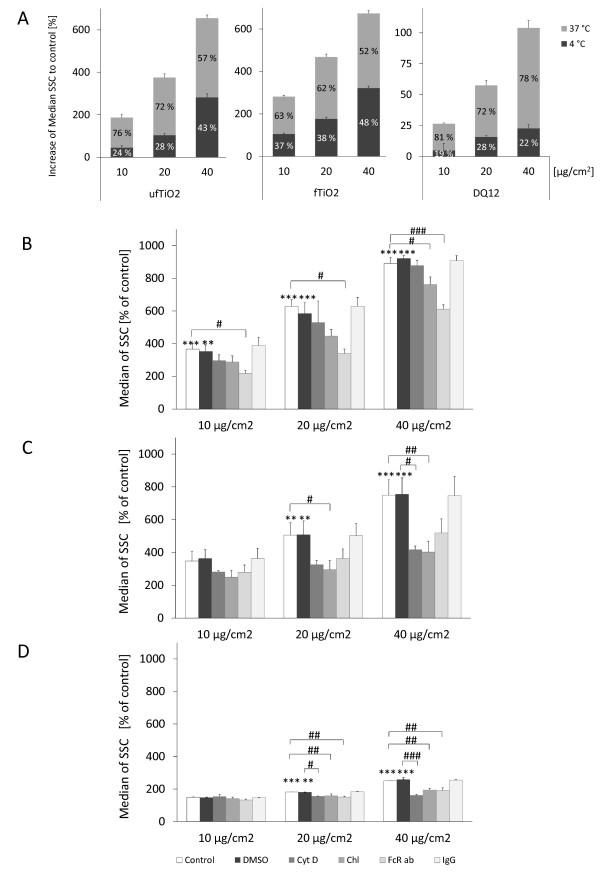Figure 9.
Particle-specific mechanisms of internalization. (A) Assessment of the percentage of passively entered particles by measuring at 4°C. The results are depicted as increase of SSC median compared to untreated NR8383 cells. (B - D) Preincubation for 30 min with cytochalasin D (CytD), chlorpromazine (Chl) or an antibody against FcγRII (FcR ab) in order to block active uptake mechanisms, i.e. actin cytoskeleton-dependent uptake, uptake via CCP formation and FcγRII-mediated internalization, respectively. Treatment with (B) ufTiO2 , (C) fTiO2 or (D) DQ12 particles in concentrations of 10, 20 or 40 μg/cm2 for 1 h shows particle-specific internalization routes. Figures represent median ± SEM as percentage of untreated or vehicle (DMSO) control cells of three independent experiments, with * p < 0.05, ** p < 0.01 and *** p < 0.001 (ANOVA with Dunnett post-hoc comparison); as well as # p < 0.05, ## p < 0.01 and ### p < 0.001 for reduced granularity vs. appropriate particle treated cells (ANOVA with LSD post-hoc comparison), respectively.

